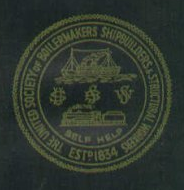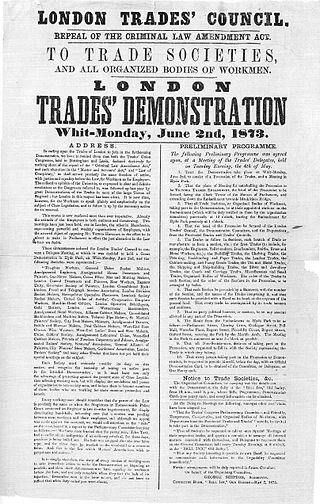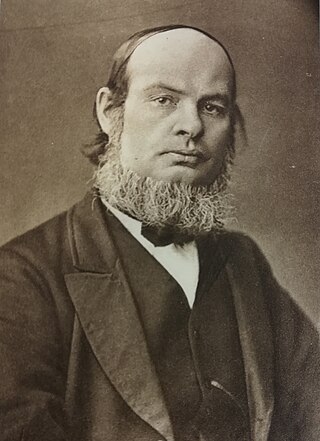
The Ceramic and Allied Trades Union (CATU) was a trade union representing pottery workers in the United Kingdom.

Ernest George Hicks was a British trades unionist and Labour Party politician.
New Model Trade Unions (NMTU) were a variety of Trade Unions prominent in the 1850s and 1860s in the UK. The term was coined by Sidney and Beatrice Webb in their History of Trade Unionism (1894), although later historians have questioned how far New Model Trade Unions represented a 'new wave' of unionism, as portrayed by Webbs.

George Howell was an English trade unionist and reform campaigner and a Lib-Lab politician, who sat in the House of Commons from 1885 to 1895.
The United Order of General Labourers was a trade union representing labourers, mostly in the construction industry, in the United Kingdom.
The Public Works and Constructional Operatives' Union was a trade union representing labourers in the United Kingdom.

The Amalgamated Society of Boilermakers, Shipwrights, Blacksmiths and Structural Workers (ASB) was a trade union in the United Kingdom. Many of its members worked in shipbuilding, in which industry it was the leading trade union, while over time it also developed strength in engineering and construction.

The London Trades Council was an early labour organisation, uniting London's trade unionists. Its modern successor organisation is the Greater London Association of Trades (Union) Councils
The Amalgamated Society of Painters and Decorators (ASPD) was a trade union in the United Kingdom which existed between 1886 and 1970.

Edwin Coulson was a British trade unionist.
Sir Richard Coppock was a British trade unionist and politician.

The London builders' strike of 1859 was a strike and resulting lock out of building trade workers across London. The action did not result in any changes to working conditions, but it led to the formation of new, national trade unions in the United Kingdom.
The General Union of Carpenters and Joiners (GUC&J) was a trade union in the United Kingdom.
The National Federation of Building Trades Operatives (NFBTO) was a trade union federation in the United Kingdom, consisting of unions with members in construction and related industries.
The Operative Society of Masons, Quarrymen and Allied Trades of England and Wales was a trade union representing stonemasons and related workers in the United Kingdom.
The Manchester Unity of Bricklayers, also known as the Manchester Unity of Operative Bricklayers Society (MUOBS) and the United Operative Bricklayers' Trade Protection Society, was a trade union representing bricklayers in the United Kingdom.
The United Builders' Labourers Union was a trade union representing labourers in the construction industry in the United Kingdom.
The Operative Builders' Union was an early trade union federation representing construction and maintenance workers in the United Kingdom.
The Amalgamated Society of House Decorators and Painters (ASHDP) was a trade union representing painters and decorators in the London area of England. The union repeatedly tried to expand across the country, but was ultimately unsuccessful in doing so.
Richard Harnott was a British trade union leader.







